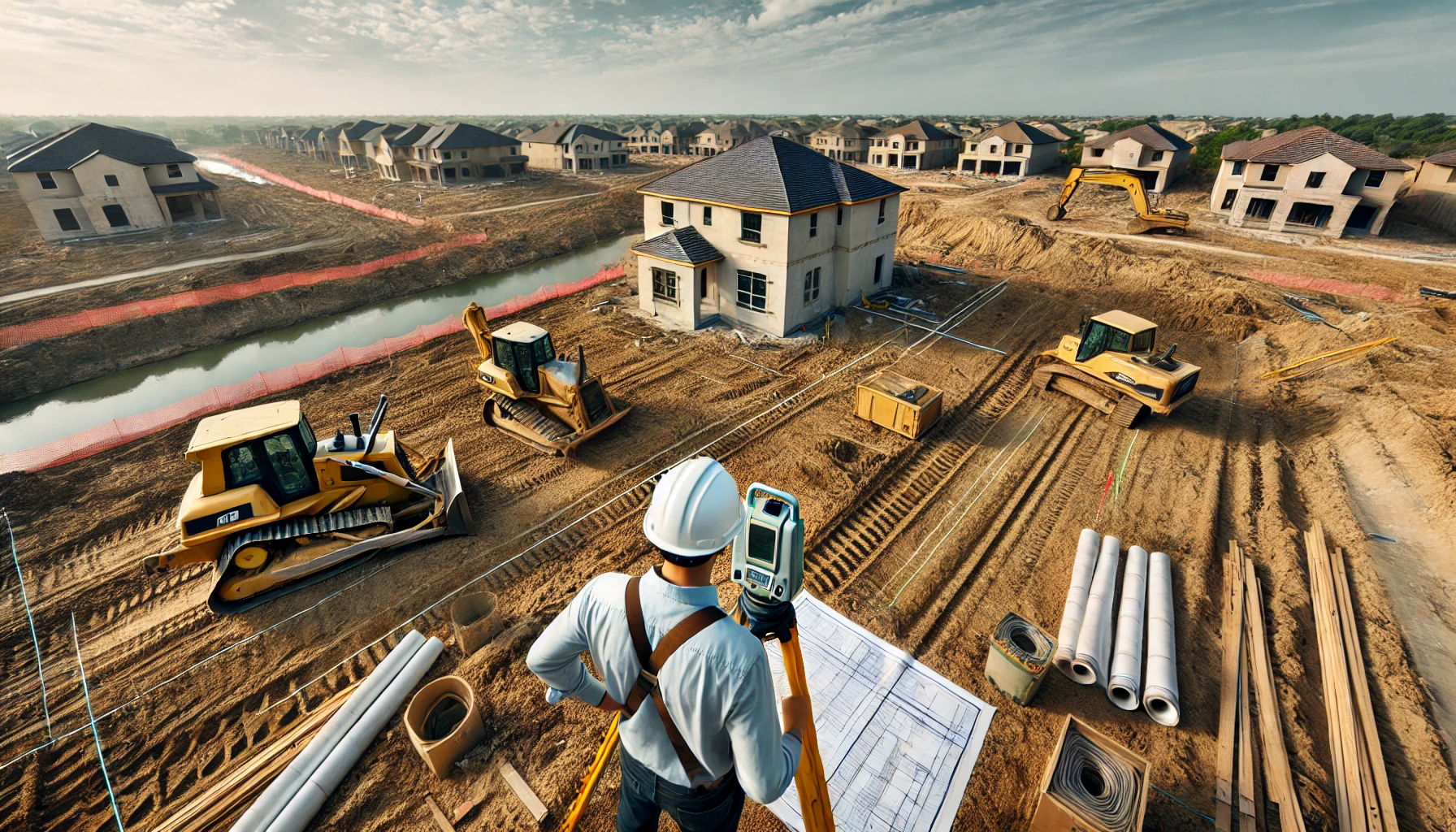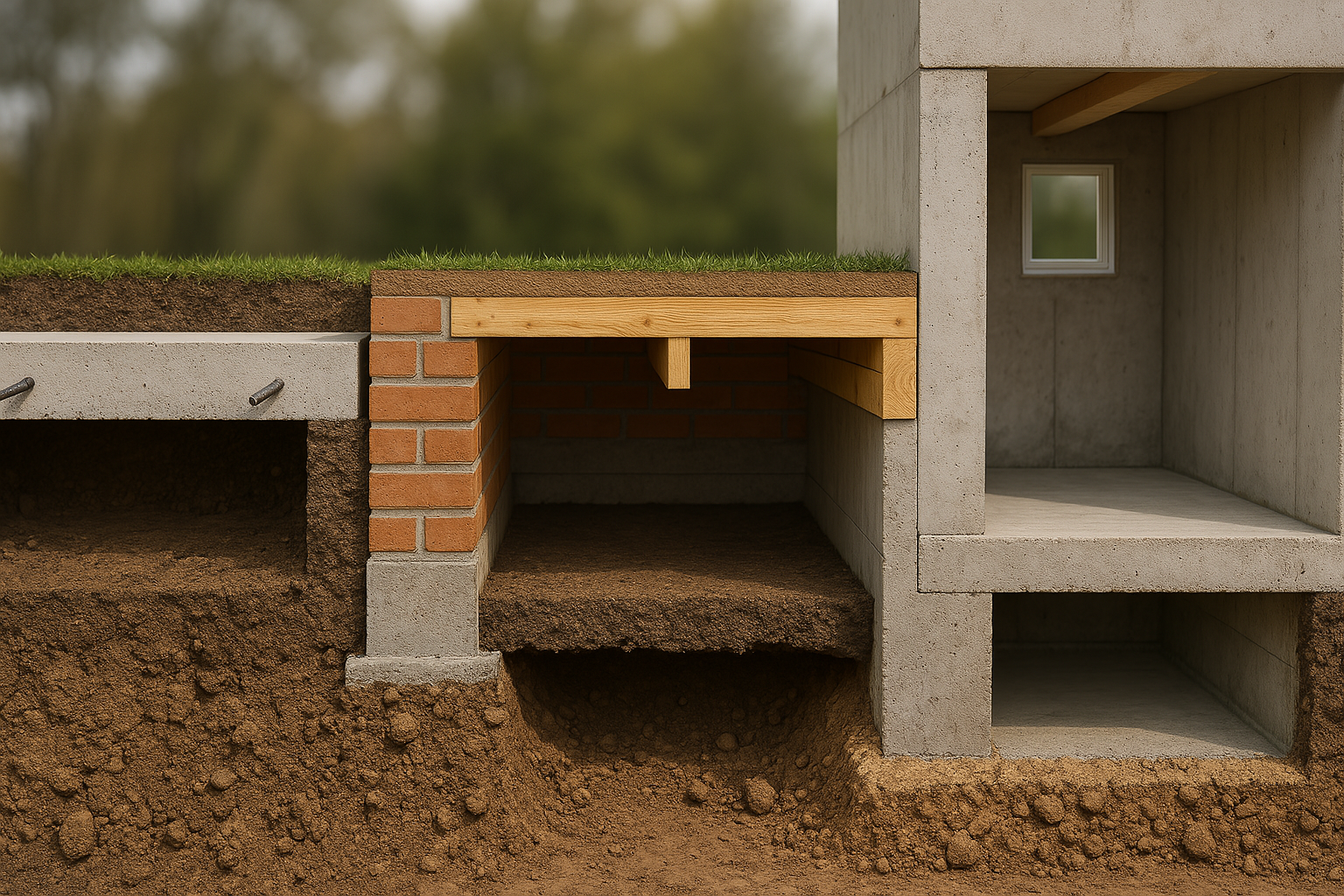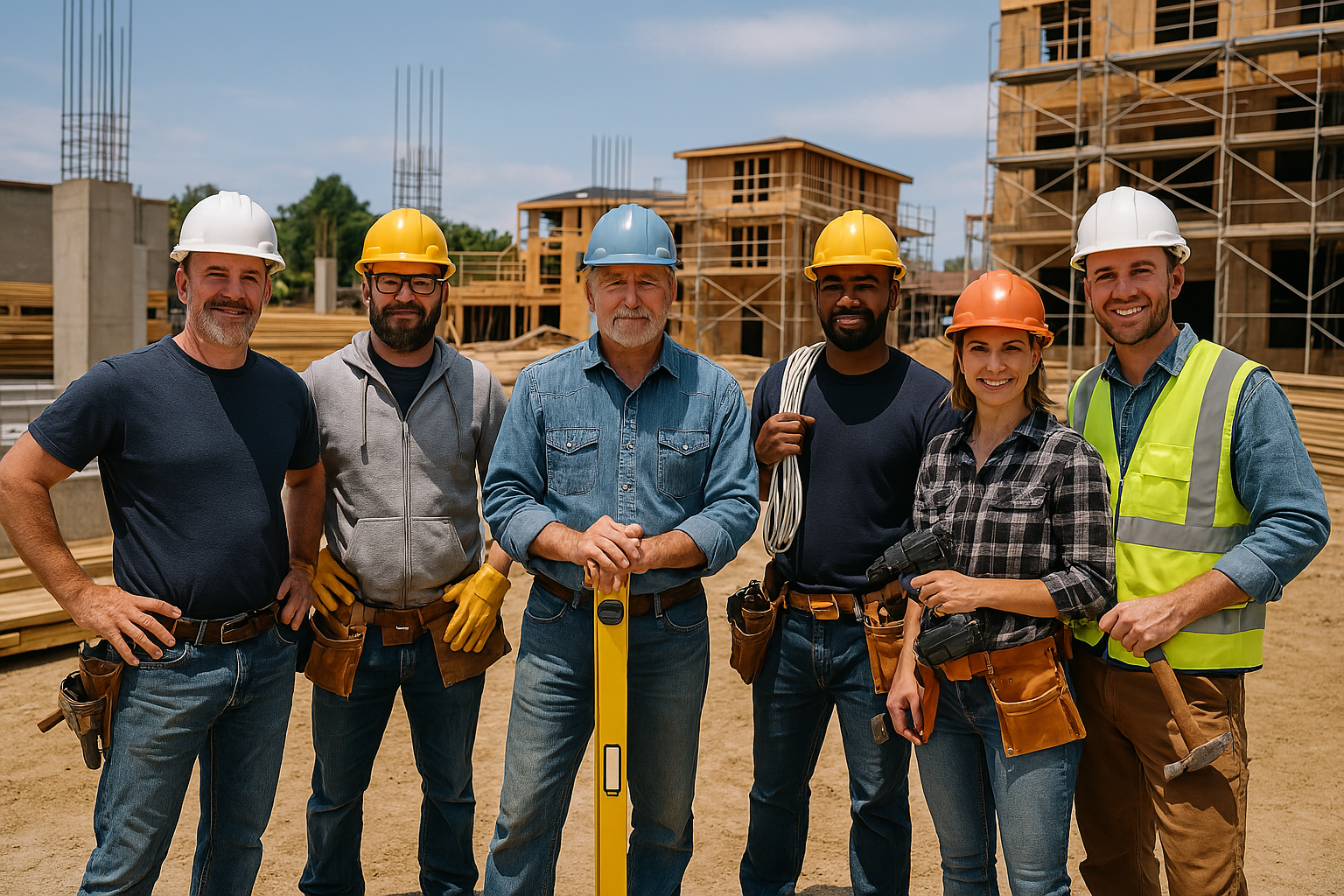Construction Site Preparation: The Complete Step-by-Step Guide for Real Estate
Proper site preparation is the foundation of every successful construction project—skip it or cut corners, and you risk costly delays, structural problems, and safety hazards. Our in-depth analysis reveals that inadequate site prep contributes to 35% of construction delays and nearly 28% of budget overruns. This comprehensive guide walks you through essential site preparation steps, cost breakdowns, and expert strategies to ensure your real estate investment starts on solid ground.

[Image: Professional Site Preparation with Heavy Equipment]
📍 See Global-Specific Requirements for Your Area Critical differences that can save you thousands
▼Key Steps in Site Preparation
These are the essential steps you need to take when preparing your site for construction, with expert insights to maximize your investment protection:
1. Survey and Staking
Conduct a comprehensive site survey to accurately mark property boundaries and stake out the construction area. This critical step ensures that your construction remains within legal property limits and meets zoning requirements.
- Advanced techniques: Modern GPS surveying provides accuracy within centimeters
- Documentation: Obtain certified survey documents for permit applications and future reference
- Boundary verification: Confirm survey markers against legal property descriptions to prevent disputes
2. Clearing and Demolition
Remove trees, vegetation, and existing structures from the construction area while implementing environmental protection measures. Proper clearing creates a safe, accessible worksite while preserving valuable landscape features when possible.
- Selective clearing: Identify and preserve valuable trees that won’t interfere with construction
- Hazardous materials: Test for and properly remove asbestos, lead, or other dangerous substances
- Recycling opportunities: Sort demolition materials for potential reuse or recycling to reduce costs
3. Grading and Excavation
Level the ground and prepare it for the foundation according to engineering specifications. Proper grading is essential for structural integrity and preventing future drainage problems that could damage your investment.
- Soil analysis: Test soil composition to identify potential issues like expansive clay or inadequate load-bearing capacity
- Drainage planning: Create proper slopes (min. 6″ drop over 10′ distance) to direct water away from foundations
- Compaction testing: Verify soil density meets engineering requirements to prevent future settlement
4. Utility Setup
Coordinate the installation of temporary utilities essential for the construction process, including water, electricity, and waste management systems. Proper planning prevents costly delays and ensures worker productivity.
- Utility mapping: Locate and mark existing underground utilities to prevent dangerous strikes
- Temporary service planning: Position utilities for optimal construction access while planning permanent locations
- Permit coordination: Schedule utility inspections to align with construction milestones
5. Erosion and Sediment Control
Implement proven methods like silt fences, erosion control blankets, and detention basins to prevent soil erosion and sediment displacement. These measures protect your site, neighboring properties, and local waterways while ensuring compliance with environmental regulations.
- Perimeter protection: Install silt fencing before clearing begins to capture runoff sediment
- Stabilization techniques: Use hydroseeding or erosion control mats on vulnerable slopes
- Maintenance schedule: Regularly inspect and repair erosion controls, especially after rainfall
6. Final Inspection
Conduct a thorough inspection to verify all site preparation meets local regulatory standards and project specifications before proceeding to foundation work. This critical step prevents costly corrections later in the construction process.
- Documentation: Compile all permits, surveys, soil tests, and inspection reports
- Verification checklist: Confirm all preparation meets both code requirements and construction plans
- Photographic record: Create detailed visual documentation of completed site preparation
Who Handles Site Preparation?
Site preparation requires various specialized professionals working as a coordinated team:
- Licensed Land Surveyor: Provides accurate boundary determination and construction staking with legal certification
- Land Clearing Specialist: Safely removes vegetation and demolishes existing structures while minimizing environmental impact
- Excavation Contractor: Executes precision grading, excavation, and soil compaction according to engineering specifications
- Erosion Control Specialist: Designs and implements systems to prevent soil loss and protect water quality
- Utility Contractors: Coordinate and install temporary services essential for construction operations
- Geotechnical Engineer: Evaluates soil conditions and recommends appropriate foundation solutions
Time & Cost Estimates
The time and cost to complete site preparation vary based on property size, land condition, local regulations, and project complexity. Here are more specific estimates for each major step:
| Preparation Stage | Estimated Time | Estimated Cost | Key Value Points |
|---|---|---|---|
| Survey and Staking | 2–3 days | $500–$1,800 | Prevents boundary disputes and construction errors |
| Clearing and Demolition | 3–7 days | $1,500–$6,000 | Creates a safe, accessible construction environment |
| Grading and Excavation | 2–5 days | $2,000–$8,500 | Establishes proper drainage and stable foundation base |
| Utility Setup | 1–3 days | $500–$2,500 | Ensures essential services for construction operations |
| Erosion and Sediment Control | 1–2 days | $1,000–$3,500 | Prevents environmental damage and compliance violations |
| Final Inspection | 1–2 days | $300–$800 | Verifies compliance with regulations and specifications |
| Total Estimates | 10–22 days | $5,800–$23,100 | Investment protection and regulatory compliance |
These cost estimations provide a general guideline and cover a range from basic to mid-tier builds. They may not reflect costs for high-end or luxury projects. For more precise estimates, consult with professionals based on your specific requirements.
Hidden Site Prep Costs That Can Destroy Your Budget
Here’s what contractors don’t mention in their initial quotes—costs that hit 73% of construction projects:
The “Surprise” Cost List:
| Hidden Cost | Typical Range | How to Avoid/Minimize |
|---|---|---|
| Rock Removal Hit bedrock? Prepare to pay. |
$5,000–$25,000 | Get deep soil boring tests before buying land |
| Utility Relocation That gas line isn’t where they said. |
$2,000–$15,000 | Pay for private utility locate service ($500) |
| Tree Removal Permits Some trees are “protected.” |
$500–$5,000 | Check city tree ordinance before buying |
| Contaminated Soil Old gas station nearby? Problem. |
$10,000–$100,000+ | Phase 1 environmental assessment first |
| Neighbor Disputes Survey shows you’re 2 feet over. |
$3,000–$20,000 | Get survey before closing, talk to neighbors |
| Archaeology Delays Found artifacts? Full stop. |
$5,000–$50,000 | Check historical records, native land maps |
Site Prep Disasters: Real Stories, Real Lessons
Learn from these expensive mistakes—photos and stories from actual construction projects:
⚠️ The $45,000 Pipeline Surprise
Location: Houston, Texas | Loss: $45,000 + 6 months delay
Homeowner discovered an active petroleum pipeline 8 feet under their foundation area. Nobody checked the Texas Railroad Commission maps (free online). Required complete redesign and 50-foot setback.
- Pipeline maps (every state has them online)
- Easement records at county office
- Old aerial photos for previous land use
⚠️ The Wetlands Nightmare
Location: Portland, Oregon | Loss: $120,000 + property unusable
Cleared 2 acres before discovering it was designated wetlands. Federal fines: $37,500/day until restored. Spent $120k on restoration, couldn’t build anything.
- Check National Wetlands Inventory maps
- Look for: cattails, standing water in dry season, certain trees
- Hire wetlands consultant for $500—not $120,000
⚠️ The Ancient Burial Ground
Location: Santa Fe, New Mexico | Loss: $85,000 + 18 months
Excavation uncovered Native American artifacts. Full archaeological survey required, plus tribal consultation. Original $12k site prep became $97k cultural preservation project.
- Near rivers, springs, or elevated areas
- Check state archaeological site database
- Talk to local historical society FIRST
Site Prep Money-Saving Secrets From 30-Year Contractors
Contractors hate when homeowners know these tricks—but here they are:
🎯 Timing = Everything
Best Months to Hire (30-40% Savings):
- Northern States: November-February (frozen ground is easier)
- Southern States: June-August (everyone wants fall starts)
- Rainy Regions: Peak dry season = peak prices (do opposite)
Real Example: Same 1-acre site prep in Michigan: March quote: $18,500 | December quote: $11,200
💰 Bundle & Save Strategies
- Magic Combo: Site prep + foundation excavation = 25% off total
- Share Equipment Costs: Find 2-3 neighbors needing work = split mobilization fees
- Off-Hours Discount: Let them work weekends/evenings = 15-20% off
- “While You’re Here”: Add future pool/septic excavation now = 50% off later cost
🔨 Legal DIY Options (Save $5,000-15,000)
| You CAN Do This | Savings |
|---|---|
| Clear small trees/brush (under 6″ diameter) | $2,000-5,000 |
| Install your own silt fence | $800-1,500 |
| Remove debris/junk yourself | $1,000-3,000 |
| Mark utilities before they arrive | $500-1,000 |
⚠️ NEVER DIY: Grading, excavation, large tree removal, or utility work
🎪 Equipment Rental Secrets
- Mini Excavator: $1,200/week rental vs $8,000 contractor markup
- Saturday Special: Many rentals give free weekend with weekly rental
- Operator Included: Some rentals include operator for +$500/day (still cheaper)
- End-of-Month: Rental places give 20-30% off to hit quotas
Future-Proof Your Site: Plan Now, Save $50,000+ Later
Smart builders prepare for future additions during site prep. Here’s what to install NOW while equipment is already there:
🏊 Future Pool/Spa Planning
Do NOW for $500-1,000 | Do LATER for $5,000-10,000
- Run 2″ electrical conduit to future pool location
- Stub out water line with shut-off valve
- Install sleeve under driveways/walks for future utilities
- Rough grade pool area (even if installing in 5 years)
💡 Smart Move: Have them dig the pool hole now for $2,000, backfill with gravel. When ready for pool, save $8,000 on excavation.
⚡ EV Charging & Solar Ready
Install infrastructure now—activate later
- EV Conduit: 2″ pipe from panel to garage ($300 now vs $2,000 later)
- Solar Ground Mount: Pour footings while concrete truck is there
- Extra Panel Space: 400-amp service vs 200-amp (+$800 now, required later)
- Grounding System: Enhanced grounding for future solar/battery
🏠 Smart Home & Security Prep
- Conduit Network: Empty pipes for future cameras/sensors
- Gate Power: Run power/data to future entry gate location
- Landscape Lighting: Install wire paths under driveways/walks
- Invisible Fence: Bury perimeter wire before final grade
🏗️ Future Building Additions
| Future Addition | Prep Now | Cost Now vs Later |
|---|---|---|
| Detached Garage/Shop | Underground utilities, rough grade pad | $1,500 vs $6,000 |
| Mother-in-Law Suite | Septic capacity, utility stubs | $2,000 vs $10,000 |
| Greenhouse/Workshop | Water, power, and gas rough-ins | $800 vs $4,000 |
⚠️ Document Everything!
Take photos and GPS coordinates of ALL underground installations:
- Create a “property infrastructure map”
- Include depths and exact locations
- Save to cloud + give copy to future buyers
- Worth $10,000+ in prevented “oops” moments
Site Prep Cost Calculator: Get Real Numbers
Stop getting shocked by quotes. Here’s what site prep ACTUALLY costs based on your lot:
Quick Cost Estimator by Lot Size & Conditions
| Lot Size | Easy Lot (Flat, clear) |
Medium Lot (Some trees/slope) |
Difficult Lot (Heavy trees/rock) |
|---|---|---|---|
| 1/4 Acre | $3,500-6,000 | $6,000-12,000 | $12,000-20,000 |
| 1/2 Acre | $5,000-8,500 | $8,500-16,000 | $16,000-28,000 |
| 1 Acre | $7,500-12,000 | $12,000-23,000 | $23,000-40,000 |
| 2+ Acres | $10,000-18,000 | $18,000-35,000 | $35,000-60,000+ |
Cost Multipliers (Add These):
- Steep Slope (>15%): Add 40-60% to base cost
- Wetlands Nearby: Add $5,000-15,000 for environmental studies
- Rock Ledge: Add $75-200 per cubic yard removed
- Poor Access: Add 20-30% for equipment challenges
- Rush Job: Add 25-50% for overtime/priority scheduling
💡 Use Our Interactive Task Pages!
Track every cost and task with our step-by-step site preparation checklist. Document everything, upload photos, and never miss a critical step.
→ Access Site Prep Task ChecklistSite Prep Q&A: Your Questions Answered
Here are the questions every homeowner asks (but contractors hope you don’t):
Q: “Why is my contractor charging a $5,000 ‘mobilization fee’?”
A: Mobilization covers getting heavy equipment to your site. It’s legit, BUT negotiate! If they’re already working nearby, push for 50% off. If you’re remote (>50 miles), expect to pay full price. Always ask: “What other jobs do you have in my area?” Bundle with neighbors to split costs.
Q: “Contractor says we need to wait 30 days after grading. Is this BS?”
A: Not BS! Soil needs to settle, especially if fill dirt was added. Rushing = foundation cracks later. However, 30 days is conservative. With proper compaction testing, 10-14 days often works. Demand a compaction report showing 95% density to justify shorter wait.
Q: “Can I clear trees myself to save money?”
A: Yes, IF: trees are under 6″ diameter, you’re not in a protected zone, and you can handle stump removal. You’ll save $2,000-5,000. BUT never touch: trees over 6″, anything near power lines, or protected species. One mistake = $10,000+ in fines or damages.
Q: “Why do quotes vary by $20,000 for the same job?”
A: Low quotes often exclude: rock removal, hauling fees, permits, compaction testing, or erosion control. High quotes might include unnecessary work or huge profit margins. Always compare itemized quotes line-by-line. The middle quote is usually most honest.
Q: “What happens if we hit rock?”
A: Your wallet cries. Rock removal costs $75-200 per cubic yard. A basketball-court-sized ledge 3 feet deep = $30,000+. Before buying land, spend $1,500 on soil borings to check. If you already own the land, get quotes for both “no rock” and “worst case” scenarios.
Q: “Do I really need erosion control fencing?”
A: YES! Skip it = automatic stop-work order + daily fines ($500-5,000/day). It’s not just bureaucracy – your runoff can destroy neighbor properties and waterways. Spend $1,500 on proper erosion control or spend $50,000 on lawsuits and restoration.
Best Time to Start Site Prep (Save 30-40%)
Timing is everything. Start at the right time = save thousands + avoid delays:
| Region | BEST Months (Save Money) |
OK Months (Normal Price) |
AVOID (Pay Premium) |
Why? |
|---|---|---|---|---|
| Northeast US | Nov-Feb | Sep-Oct, Mar | Apr-Aug | Frozen ground easier, contractors hungry |
| Southeast US | Jun-Aug | May, Sep | Oct-Apr | Everyone wants fall starts |
| Pacific NW | Jul-Sep | Jun, Oct | Nov-May | Rainy season = mud nightmare |
| Southwest US | May-Jul | Apr, Aug | Sep-Mar | Too hot = contractors won’t work |
| Midwest US | Dec-Feb | Nov, Mar | Apr-Oct | Spring thaw = mud season |
| Mountain West | Aug-Oct | Jul, Nov | Dec-Jun | Snow/mud makes work impossible |
🎯 Weather Timing Power Moves:
- Book in “bad” weather: Get 30-40% discounts when others won’t build
- Lock in prices early: Sign contract in slow season for busy season work
- Rain clause: Add “weather days don’t count” to avoid rush charges
- Multi-season plan: Prep in winter, build in spring = huge savings
Insurance & Legal Protection During Site Prep
One accident = bankruptcy. Here’s how to protect yourself:
⚠️ Critical Insurance Requirements
Your Contractor MUST Have:
- General Liability: Minimum $2 million (preferably $5 million)
- Workers Comp: Active policy covering ALL workers
- Commercial Auto: Covers equipment transport damage
- Umbrella Policy: Extra $1-5 million for major disasters
VERIFY: Call insurance company directly. 30% of certificates are fake or expired.
YOU Need to Add:
- Builder’s Risk Policy: Covers materials and work in progress (~$500-2,000)
- Liability Increase: Bump homeowner’s policy to $1 million+ during construction
- Named Additional Insured: Add yourself to contractor’s policy ($100-300)
📸 Documentation That Saves Your Ass
Daily Photo Checklist:
| Before Work Starts | 360° video of entire property, neighbor properties, street |
| Daily Progress | Time-stamped photos from same angles each day |
| Any Discoveries | Rock, pipes, artifacts – video + witnesses |
| Weather Events | Rain, snow, wind damage – document immediately |
| Neighbor Interactions | Any complaints or agreements – get in writing |
PRO TIP: Upload all photos to cloud storage DAILY. Phone gets stolen/broken = evidence gone.
📋 Lien Waiver Strategy
Protect against mechanics liens (contractor’s unpaid subs coming after YOUR house):
- Partial Lien Waiver: Get one with EVERY payment
- Final Lien Waiver: Before final payment – covers all work/materials
- Sub-Contractor Waivers: Get directly from major subs (excavator, etc.)
- Material Supplier Waivers: For any delivery over $1,000
Simple Lien Waiver Text:
“In exchange for payment of $______, [Company Name] waives and releases any right to file a mechanic’s lien for work performed at [Property Address] through [Date].”
Need help finding the right insurance? Check our Insurance Guide:
Get Proper Construction Insurance → Find Required Permits →Related Construction Guides
Continue your construction journey with these essential guides:
Foundation Work Guide
Your next step after site prep. Learn foundation types, costs, and common mistakes.
Read More →Pool Construction Planning
Planning a pool? Start the groundwork during site prep and save thousands.
Read More →Permit Guide
Navigate the permit process. Know what you need before breaking ground.
Read More →Complete Build Process
See all 10 construction steps from site prep to landscaping.
Read More →Cost-Saving Tips
Optimize your site preparation investment with these expert strategies:
- Timing optimization: Schedule land clearing and grading during dry weather to avoid weather-related delays and additional costs
- Equipment consolidation: Coordinate with contractors to minimize the number of equipment mobilizations to reduce fees
- Material recycling: Process cleared vegetation into mulch and reuse excavated soil for backfilling to reduce disposal costs
- Regulatory incentives: Research local programs that offer discounts or financial incentives for erosion control compliance
- Contractor expertise: Hire experienced professionals familiar with local regulations to avoid costly rework or compliance penalties
- Bulk purchasing: Negotiate package pricing for erosion control materials and temporary utilities through primary contractors
Summary: Your Site Preparation Action Plan
1. Understand Your Site Preparation Tasks
Know the essential steps and benefits of proper site preparation to protect your investment and ensure construction success.
2. Complete Survey Details
Gather all necessary information on your site, including professional survey documentation and soil testing results.
3. Follow Action Items
Verify boundary markers, confirm zoning compliance, and implement proper drainage solutions to ensure a smooth construction process.
A professionally prepared site is the foundation of every successful construction project. Follow these expert-backed steps to build with confidence.
Start Your Site Preparation With Confidence
Track Your Progress: Monitor your site prep milestones with our interactive tools
Stay Notified: Receive alerts for deadlines, inspections, and essential steps
Step-by-Step Guidance: Follow detailed instructions on boundary verification, zoning compliance, and more
Reduce Stress: Keep all site preparation details organized in one secure location
Whether you’re building from scratch or preparing a site for renovation, this guide provides everything you need to manage your project with confidence. Explore our Step-by-Step Builds, Step-by-Step Buys, and Step-by-Step Invest resources for more expert guidance.
When building your own home, always do your due diligence. Consult the professionals you’ve hired—such as your architect, subcontractors, or engineers—and confirm that your work complies with all local building codes and inspections required in your country, state, or province. Builds and Buys is for educational purposes only. Always verify with licensed professionals.
Site Preparation Construction Class
Join Shemss Homes in Lake Tahoe for exciting hands-on construction classes! Our first class, “Site Preparation,” recently took place in South Lake Tahoe. Whether you’re a seasoned contractor or simply eager to learn, our free classes are open to all.
Check out more informative Videos
News And Knowledge
Stay informed with the latest trends, insights, and updates in the real estate world.











